Signale für das Zugpersonal / Signals for the Train Staff
ID
aspect

Call attention, acknowledge a signal, warn before level crossings etc.




Something extraordinary has happened. Stop and help.
 |
 |
At daylight: raise both hands and slap them together above the head.
At night: raise light in a semi-circle and move down quickly
 |
 |
 |
 |
 .
.At daylight: hold both hands raised,
at night, move white light in the manner of a tilted '8' multiple times.
 |
 |
 |
 |
May be given also by hand, verbal order, or lantern. The signal with the green vertical bar is obsolete.




The "T" symbol is only used at S-Bahn urban railways
Fahrleitungssignale / Catenary Signals
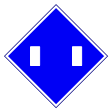
This signal is shown only where necessary. It is then usually mounted at half braking distance before an El 1.
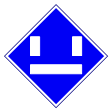
El 1/2
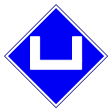

Schaltsignal für verkürzte Schutzstrecken (Switch signal for short protection tracks): Main switch must be off when passing this signal. It may be turned on after passing the signal when catenary voltage has returned

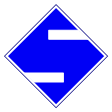
Placed at least 250 m before El 4.
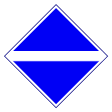
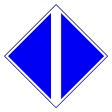
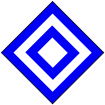
 |
 |
 |
 |
[El 7]
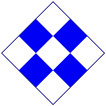
(Berlin urban railway only) Interrupt Power by releasing the drive switch.

At points used above an El signal to indicate which line the El signal is intended for.
If the El signals is valid either for both ways, or there are more points in short distance after another, two arrows may be used.
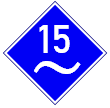
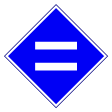
Power must not be turned on / panto must not be raised unless loco has been adjusted to posted power system. (15kV AC or DC in these examples)
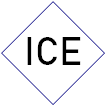


Electric Line Section - begin / end
Marks the section area where trains must not stop with pantos raised.
Signale an Zügen / Signals at Trains
Zg 1a
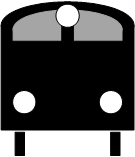
If first vehicle is neither loco nor control car the signal Zg 1b is used.
Locos assisting in rear also use the Zg 1 if they are not coupled to the train.
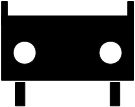


 |
 |

Vereinfachtes Schlußsignal / Simplified Tail Signal. A red disc with white border, usually hung at the rear coupling.
Signale an einzelnen Fahrzeugen / Signals at Single Vehicles
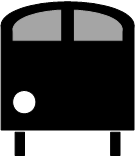
One light front and rear. If unsecured level crossings are travelled, signal Zg 1a has to be used instead.
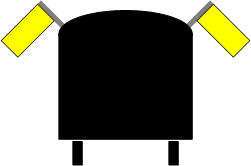
Marks occupied staff cars that are not part of a train. At night the cars must be visibly illuminated from inside.
Rottenwarnsignale / Gang Warning Signals


A long two-frequency tone


Two long tones with different frequency


Two short tones with different frequency, repeated at least five times.

Marks the side of the track where to leave to in case of signals Ro 2 or Ro 3.
 home
home additional
signals
additional
signals email
email supplemental
signals
supplemental
signals other
signs
other
signs